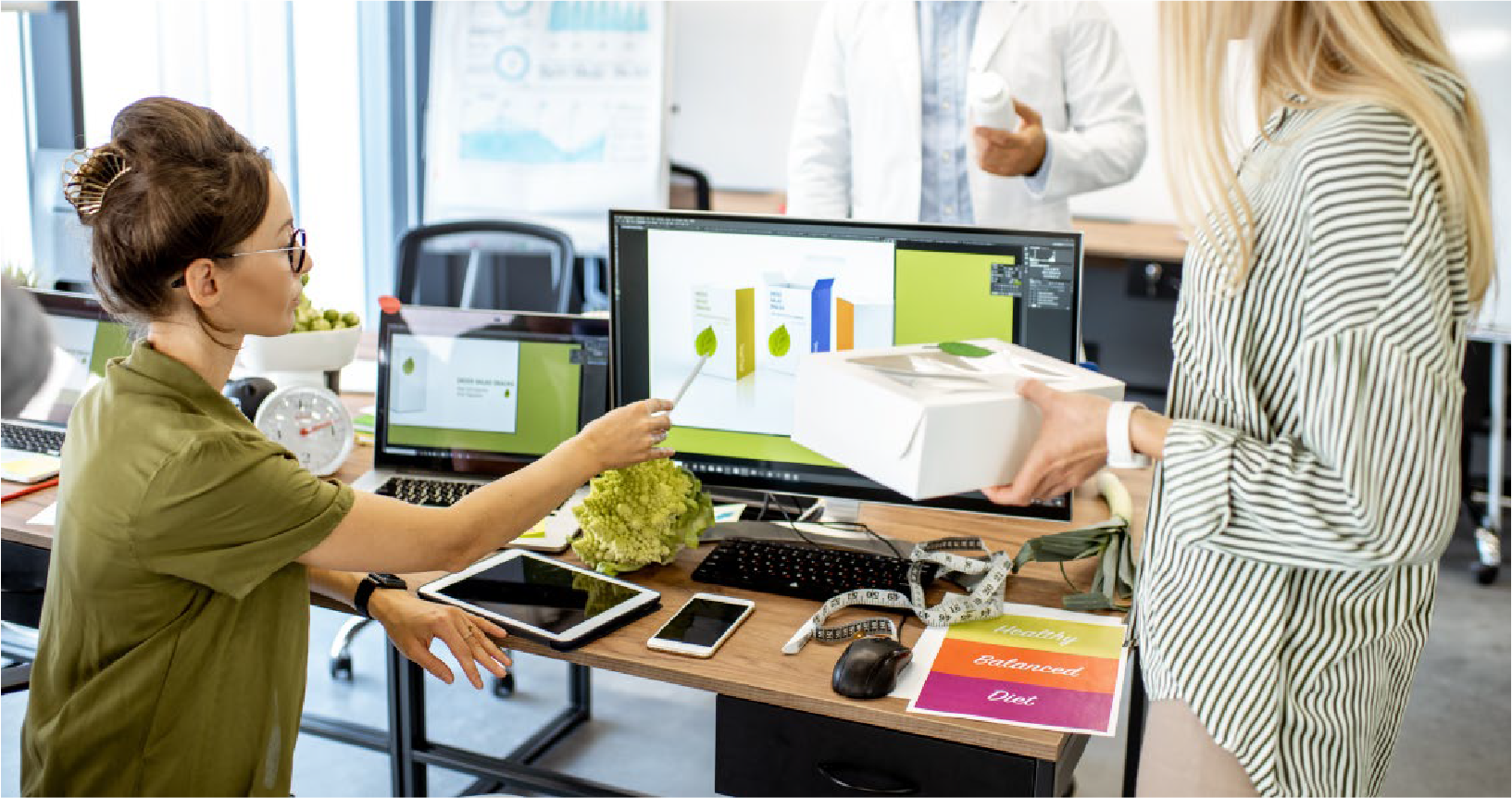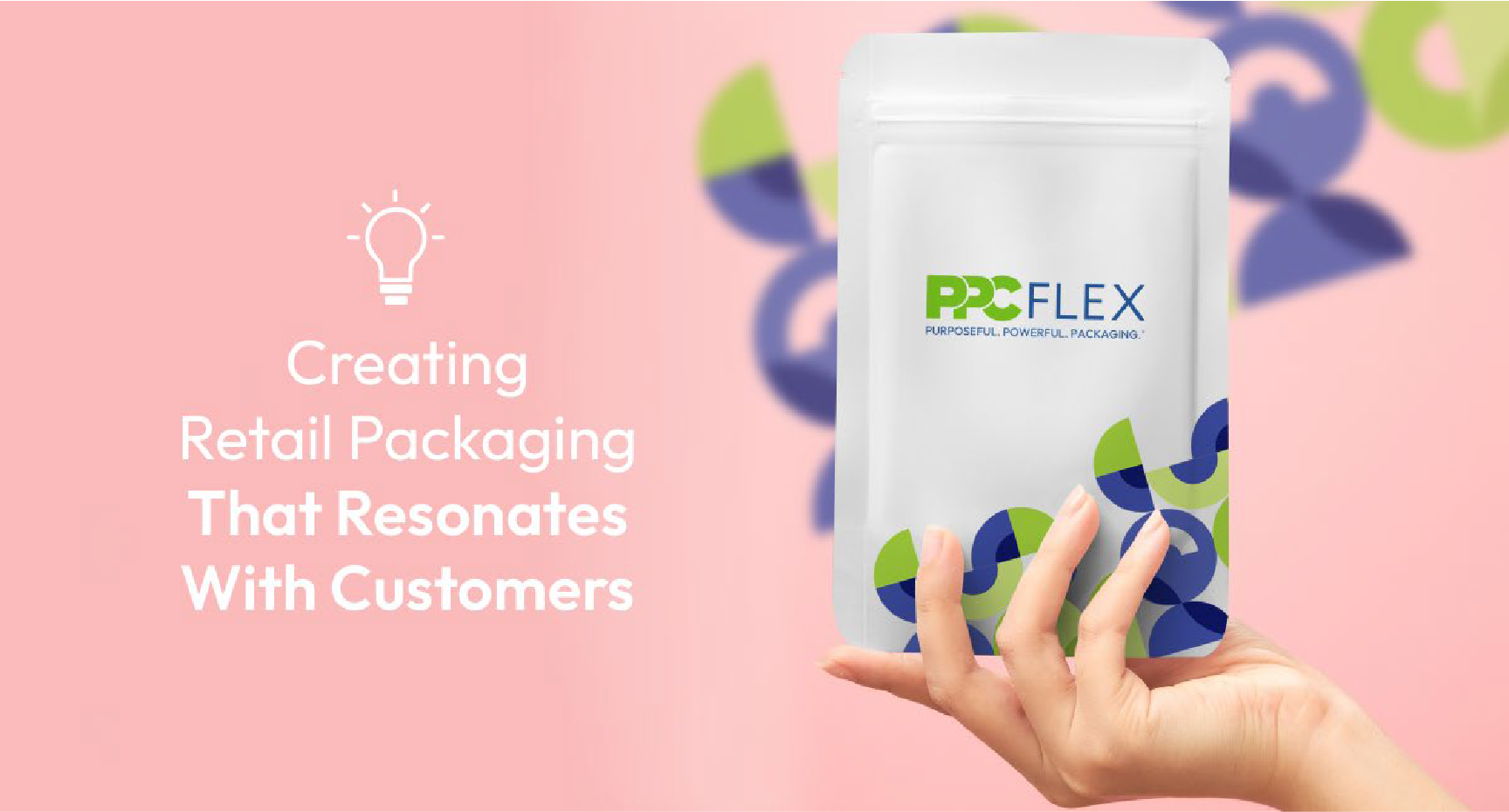Retail packaging is an essential part of creating a brand’s identity. Whether intended or not, packaging tells a story to your customers. It can tell them what type of brand you are, your brand values, and if you understand the needs of your customer base. A bad first impression is difficult to come back from, and sales can suffer. What story are you telling your customers through your flexible packaging?
What Do Consumers Want in Retail Packaging?
Retail packaging plays a critical role in capturing customers’ attention and driving sales. Flexible packaging has emerged as a versatile and effective solution for retailers and a packaging type that can meet the needs of consumers. Flexible packaging can be used as a conduit to tell your story about a brand that understands what customers want.
When people think of flexible packaging, one of the things that immediately comes to mind is sustainability. Plastics have gotten a bad rap regarding environmental impact, but in many cases, flexible packaging is a better choice (more on this later). One study conducted in 2020 by Mckinsey found that for US consumers, environmental concerns came after food safety, shelf life, ease of use, durability, information on the label, and appearance.
Flexible packaging can be ideal for keeping food safe and extending its shelf life. Moisture and oxygen and the two biggest causes of food spoilage, and the right packaging can prevent or reduce the penetration of these and extend the product’s shelf life. However, not all plastics are created equal. Water vapor and oxygen molecules are extremely small and can diffuse through many polymers. Plastic materials can be amorphous, meaning they have a random molecular structure to them, like a pile of spaghetti, or semi-crystalline, meaning most of the chemical structure is arranged in a tightly packed orderly manner with some amorphous areas. Moisture vapor and oxygen can diffuse through the open amorphous structure.
However, using the right materials and custom barriers can create a customized solution for keeping products fresh. For example, laser technology called Controlled Atmosphere Packaging (CAP) is being used for fresh produce to minimize oxygen’s impact with a customized and produce specific calculation based on the produces unique respiratory needs. Retail food packaging can also have resealable zippers or fitment features that allow products to stay fresh longer.
 Consumers also love flexible packaging and pouched for their ease of use, convenience, and durability. Flexible packing is lightweight and takes up less space than boxes because it can be customized to fit the product, often resulting in products with easy handling, portability, and on-the-go consumption. Resealable zippers and spouts add to the convenience. Flexible pouches are extremely durable, so consumers don’t have to worry about them breaking or leaking into shopping bags or lunch boxes.
Consumers also love flexible packaging and pouched for their ease of use, convenience, and durability. Flexible packing is lightweight and takes up less space than boxes because it can be customized to fit the product, often resulting in products with easy handling, portability, and on-the-go consumption. Resealable zippers and spouts add to the convenience. Flexible pouches are extremely durable, so consumers don’t have to worry about them breaking or leaking into shopping bags or lunch boxes.
For label information and eye-catching appearance, flexible packaging has superb printability. Beautiful high-definition graphics for your custom pouches and flexible packaging are accomplished with flexographic printing. Flexographic printing provides exact ink control and strong lay-down on a wide range of films. Wheth-er you need clear nutrition information, high-graphic product images, or clear claims about sustainability, customers will love having information at their fingertips in beautiful packaging.
Customers Still Want Sustainable Retail Packaging and Products
Even though it wasn’t at the top of the list, sustainable packaging is still important to consumers. A joint study published in February 2023 by McKinsey and NielsonIQ examined sales growth for products that claim to be environmentally and socially responsible. Previous studies have shown that more than 60 percent of consumers say they would pay more for a product with sustainable packaging, but many CPG executives report that their companies’ environmental, social, and governance (ESG) initiatives are challenged by the inability to generate sufficient consumer demand for these products.
So, the study aimed to examine claims and learn how they influence consumer spending. They found that over the past five years, products making ESG-related claims averaged 28 percent cumulative growth versus 20 percent for those without claims. The claims went beyond packaging and were categorized as those falling under animal welfare, environmental sustainability, organic farming methods, plant-based ingredients, social responsibility, and sustainable packaging. They found that no one claim outperformed others, but less common claims and combining claims did outperform. A claim of carbon zero outperformed sustainable packaging, which beat environmentally sustainable. But even then, prevalent claims such as environmentally sustainable outperformed products that didn’t make claims by achieving 2 percent higher growth.
This is good news for brands with ESG-related claims. However, ensure that your claims can be backed up. Greenwashing, making misleading claims about a product’s environmental or social merits, can damage your reputation and erode trust. It can also land you in hot water with the Federal Trade Commission. So how does flexible packaging fit into the green conversation? Life cycle assessment case studies of various packaging types were developed by the Flexible Packaging Association to demonstrate that flexible packaging has preferable environmental attributes for carbon impact, fossil fuel usage, water usage, product-to-package ratio, and material-to-landfill.
The lifecycle assessment case studies compared the environmental impact of packaging throughout its lifecycle for various product categories. The results from the case studies show that flexible packaging has preferable environmental attributes mentioned above than other package formats.
There are other methods for creating an even greater impact. Downgauging and customizing packaging to your product can reduce the amount of material used, further reducing weight and waste. Using recyclable materials with clear instructions for consumer recycling will resonate with your customers and help you reach ESG goals. And now, plant-based compostable materials packaging is available, providing another way to meet your customers’ needs.
Let PPC Help You Tell Your Story
Let your customers know you understand their needs. At PPC, whether that is easy-to-use packaging, reclosable pouches, clear graphics, or green packaging, we will work with you to develop a solution that meets your needs. Contact us today.
